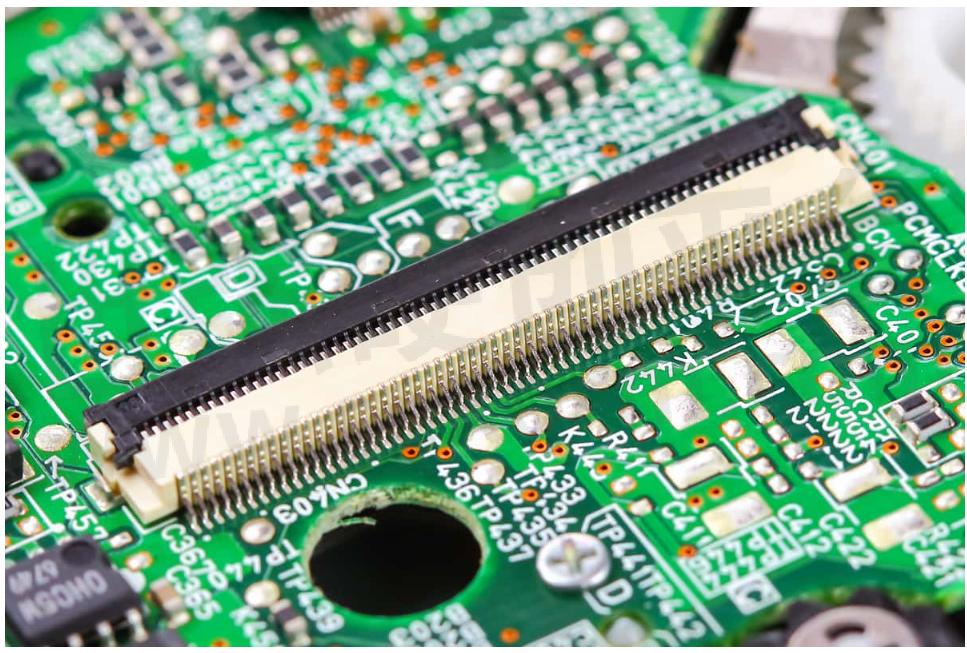Inside the FFC Connector: A Comprehensive Guide to its Function and Applications

Flexible Flat Cable (FFC) connectors are ubiquitous components in modern electronics, offering a compact and flexible solution for interconnecting various electronic devices. In this comprehensive guide, GREENCONN will delve into the inner workings of FFC Connectors, understand their functionality, and explore the diverse range of applications where they excel.
How FFC Connectors Work
At its core, an FFC connector is designed to accommodate a flexible flat cable, often referred to as a ribbon cable. The FFC itself consists of multiple conductive copper traces sandwiched between layers of flexible insulating material. This configuration enables the cable to bend and flex, making it ideal for applications with tight spaces or frequent movement.
The FFC connector's design includes a plastic housing with a clamping mechanism that secures the flat cable's end in place. When properly inserted, the conductive traces on the cable make contact with corresponding metal contacts within the connector. This establishes an electrical connection, allowing data and power signals to pass between connected devices.
Advantages and Features of FFC Connectors
FFC connectors offer several distinct advantages that make them a popular choice in many electronic applications:
FFC connectors take up minimal space, making them valuable in compact electronic devices where traditional wire harnesses might be impractical. The closely spaced conductive traces on FFCs enable high-speed data transmission, making them suitable for modern data-intensive applications. FFC connectors simplify the assembly process since the flat cables can be easily inserted and secured with the clamping mechanism.
Applications of FFC Connectors
FFC connectors find widespread use in various industries and applications. Some common areas where they are deployed include:
FFC connectors are commonly used in smartphones, tablets, laptops, digital cameras, and other portable electronic devices where space is limited, and reliable connections are essential. FFC connectors are employed in automotive applications such as infotainment systems, airbag modules, and dashboard displays due to their space-saving design and robustness. FFC connectors play a crucial role in industrial automation equipment, robotics, and control systems, enabling reliable data transmission in demanding environments.
In conclusion, Flexible Flat Cable connectors (FFC connectors) are versatile components that have revolutionized the world of electronics by offering compact, reliable, and high-speed connectivity solutions. Their ability to adapt to tight spaces and endure repeated flexing makes them invaluable in numerous industries, ranging from consumer electronics to automotive and aerospace applications. Understanding the inner workings and diverse applications of FFC connectors empowers engineers and designers to make informed choices when implementing these connectors in their projects, ultimately contributing to enhanced performance and innovation in the electronic world.

- +1 Like
- Add to Favorites
Recommend
- Kinghelm Launched 32-pins FFC Connection Cable KH-FFC-A0.5-32P-100MM with the Total Length of 10cm
- What is the Difference Between FFC and FPC Connectors?
- The Difference between FFC Connectors and FPC Connectors
- Kinghelm‘s FFC Cable KH-FFC-A1.0-8P-200MM with Excellent Performance and Quality
- FFC vs. FPC Connectors: Choosing the Right Connector for Your Application
- Kinghelm KH-FFC-A0.5-40P-150MM: High-Performance FFC Flat Cable Leading a New Era in Electronic Connections
- FFC FPC Connector: The Key to Seamless Electrical Connections
- Unraveling the Flexibility: The Advantages of FFC Connectors in Modern Electronics
This document is provided by Sekorm Platform for VIP exclusive service. The copyright is owned by Sekorm. Without authorization, any medias, websites or individual are not allowed to reprint. When authorizing the reprint, the link of www.sekorm.com must be indicated.






























































































































































































































































































































































































































































































































































































































































































































































































































































































